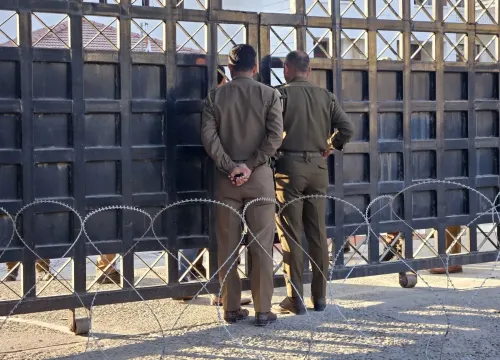What Does the Red Fort Blast Probe Reveal About ISI's 'Auto-Pilot' Modules in India?

Synopsis
Key Takeaways
- The Red Fort blast probe reveals a complex network of self-radicalized terror modules.
- Members of the Faridabad module financed their operations independently.
- The ISI's indirect involvement highlights a strategic shift in fostering autonomous terror operations.
- Preventive measures by Indian security agencies are crucial for national safety.
- The relationship between ideology and local operatives is pivotal in understanding modern terror threats.
New Delhi, Nov 26 (NationPress) The explosion at the Red Fort in Delhi and the substantial seizure of ammonium nitrate have resurfaced discussions regarding the notorious Indian Mujahideen. The focus on homegrown and self-radicalized terrorists is once again prevalent, presenting a fresh challenge for Indian security agencies.
There are notable parallels between the Faridabad terror module and the operations of the Indian Mujahideen, with both groups comprising solely Indian Muslims. The operatives from both factions were typically educated individuals, many of whom hailed from affluent backgrounds.
According to officials from the Intelligence Bureau, while both modules share numerous characteristics, there is a subtle distinction in Pakistan's management of them. The Indian Mujahideen was primarily part of Pakistan's expansive Karachi Project, overseen exclusively by Pakistani operatives, rendering it effectively a foreign-funded operation masquerading as a domestic outfit.
Conversely, the Faridabad module is marked by its composition of self-radicalized individuals. These educated members financed their own activities and adhered to the ideology of Jaish-e-Mohammed, aligning with the group's perspectives on Jammu and Kashmir.
Experts indicate that, in essence, the Faridabad module drew inspiration from the ideology of Jaish-e-Mohammed, which operates from Pakistan. The module's members, guided by Maulvi Irfan Ahmed from Jammu and Kashmir, united based on shared beliefs. They opted to focus their efforts outside Jammu and Kashmir, allowing Pakistan to provide support from Afghanistan once their plans were established.
Investigations reveal that the members of the Faridabad module utilized their high-paying jobs to fund their operations. They successfully acquired significant quantities of ammonium nitrate and sourced acetone, hydrogen peroxide, and nitric acid. This combination can be detonated through heat or friction, eliminating the need for a triggering device.
Officials assert that compared to the Indian Mujahideen, the Faridabad module represents a genuine homegrown terror group, with the primary command structure based in India. Pakistan's involvement only became significant in the operational phases.
However, the existence of this homegrown module does not absolve Pakistan of responsibility. Although the ISI's direct involvement with this module was minimal, the agency laid the groundwork by recruiting and radicalizing individuals from Jammu and Kashmir. These individuals are subsequently tasked with overseeing such modules, ensuring minimal direct contact with Pakistan to obscure any investigative trails.
This strategy appears to be a calculated maneuver by the ISI, designed to facilitate the autonomous operation of terror groups. Officials predict that this will increasingly become the modus operandi of the ISI in India, as any evidence failing to trace back to Islamabad is crucial for Pakistan.
While there is considerable anxiety regarding the potential return to the Grey List of the Financial Action Task Force (FATF), another significant concern is India's potential response. The repercussions of Operation Sindoor following the Pahalgam attack have instilled fear in Pakistan, prompting it to seek to avoid further embarrassment in the future.









